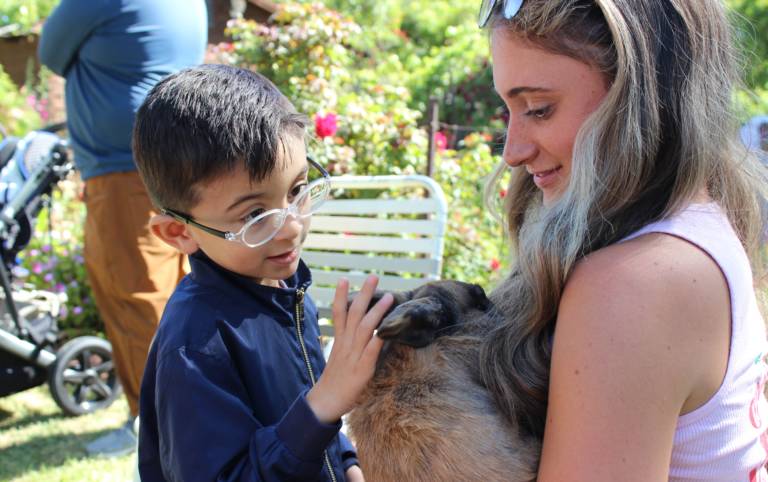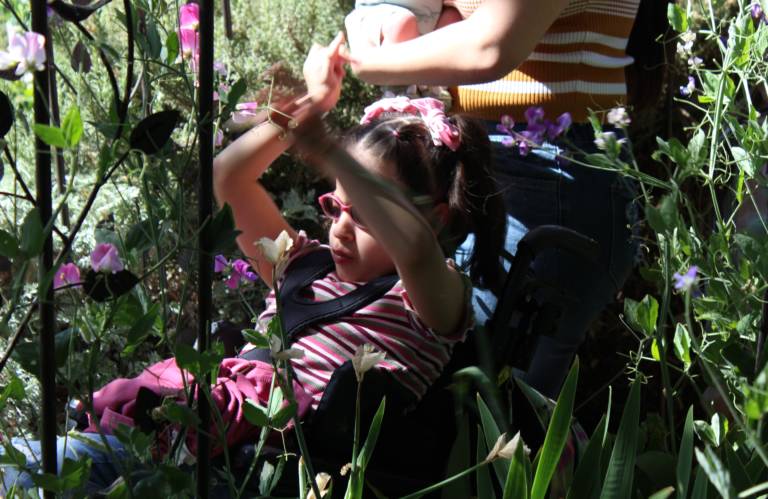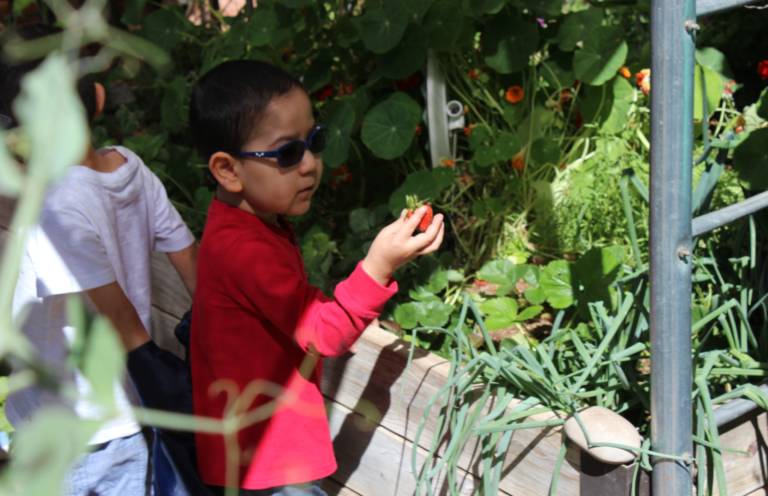Non-Visual Multi-Sensory Experiences for Children With Multiple Disabilities
Vision is a motivating sense. Therefore, when a child has a visual impairment, teachers need to offer experiences that utilize children’s other senses to increase engagement, participation, and support their concept development. It can be difficult for a child with a visual impairment to understand their environment. By offering multi-sensory learning experiences, children learn more about their environment, learn concepts from part to whole, and improve their level of active participation. Three techniques to consider are providing experiences with real objects, considering the sensory components, and selecting activities that are meaningful to the child.
Using Real ObjectsFor example, consider using real food instead of play food when teaching concepts in a story, grocery shopping practice, or identifying foods for a recipe. Using play food as a prop does not provide accurate information for the child. The toy orange may look the same as a real orange, yet it lacks other critical features such as the correct weight, texture, and smell. A real orange can be peeled and sectioned. An orange with the peel is dry and once the peel is removed the orange is cold, wet, and sticky. Children need all the information about the orange to understand it.
Sensory Components
It is important to present prop box items that represent essential components of the story. Focus on all the sensory information of the activity. Consider sounds, tactile, and smells. Sounds may include your voice, the sound of the pages being turned, and the sounds of the materials from the story box. Consider touch - what is the child touching in their chair- a hard table or tray, squishy arm rests, the material of their clothes. Other things they may be touching are braille, textures in the book, the book and pages, and the various textures of each object. Finally think about smells- the paper, plastic, rubber, fabric etc. Each object has a scent. As you are working your way through the activity, attend to the amount of sensory information the child is receiving and comprehending, and whether the child demonstrates any preferences or sensory hesitations. Adjust the activity to encourage their engagement and respect their aversions or resistance to the sensory input.
Meaningful Activities
Take the child on a sound walk- through the activity, the classroom, the school, and outdoors. Identify sounds and put them into context for the child. When appropriate, have the child recreate or touch the object making the sound. Sounds that may be of interest are the doors opening and closing, chairs being moved, a swing, a toy, running water etc. It may be helpful if you as the instructor walk through the space with your eyes closed and listen to the various sounds. This can help you focus on the sound without relying on your vision for identifying information.
Many children are working on identifying and naming objects. Instead of sitting down to work on the goal by having several objects to name (such as a book, cup, ball or shoe) use those items within context. For example, a child may need to identify and/or name a ball. Play ball with the child repeatedly. As you are playing, emphasize the word ball and provide descriptive information. Talk about the experience while you are playing. As the child becomes more familiar with the activity you can use different types of balls. If you want to assess the child to determine if they can identify and/or name the ball by touch, have a ball and an unrelated item(s) near them. As you introduce the activity, ask them to touch or pick up the ball so that you can play. The child may need time to touch the items in their defined workspace to select it. Learning about a ball within a ball activity is more meaningful than being shown several objects and asking the child to pick up the requested object. Visual information provides a significant amount of information to any learner. However, when a child has a visual impairment and multiple disabilities, it is critical to teach compensatory skills to improve sensory integration. Touch, taste, sound, and smell also provide meaningful information that can be engaging and interesting to a child. When children have the opportunity for frequent, repeated multi-sensory activities, they learn to use their other senses to process and comprehend information. |
A Shared Vision: Partners in Pediatric Blindness & Visual Impairment
EIN 81-4227664



